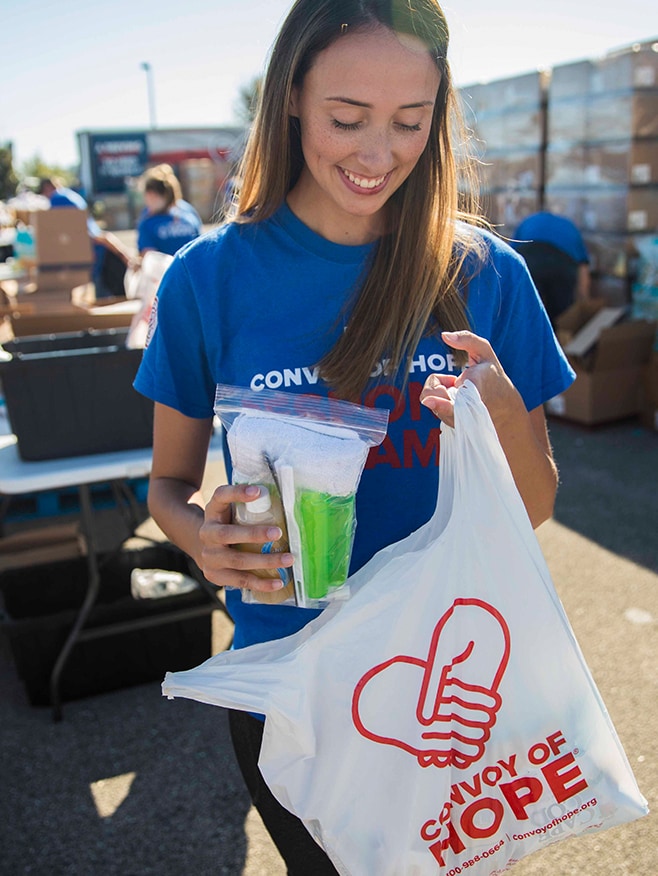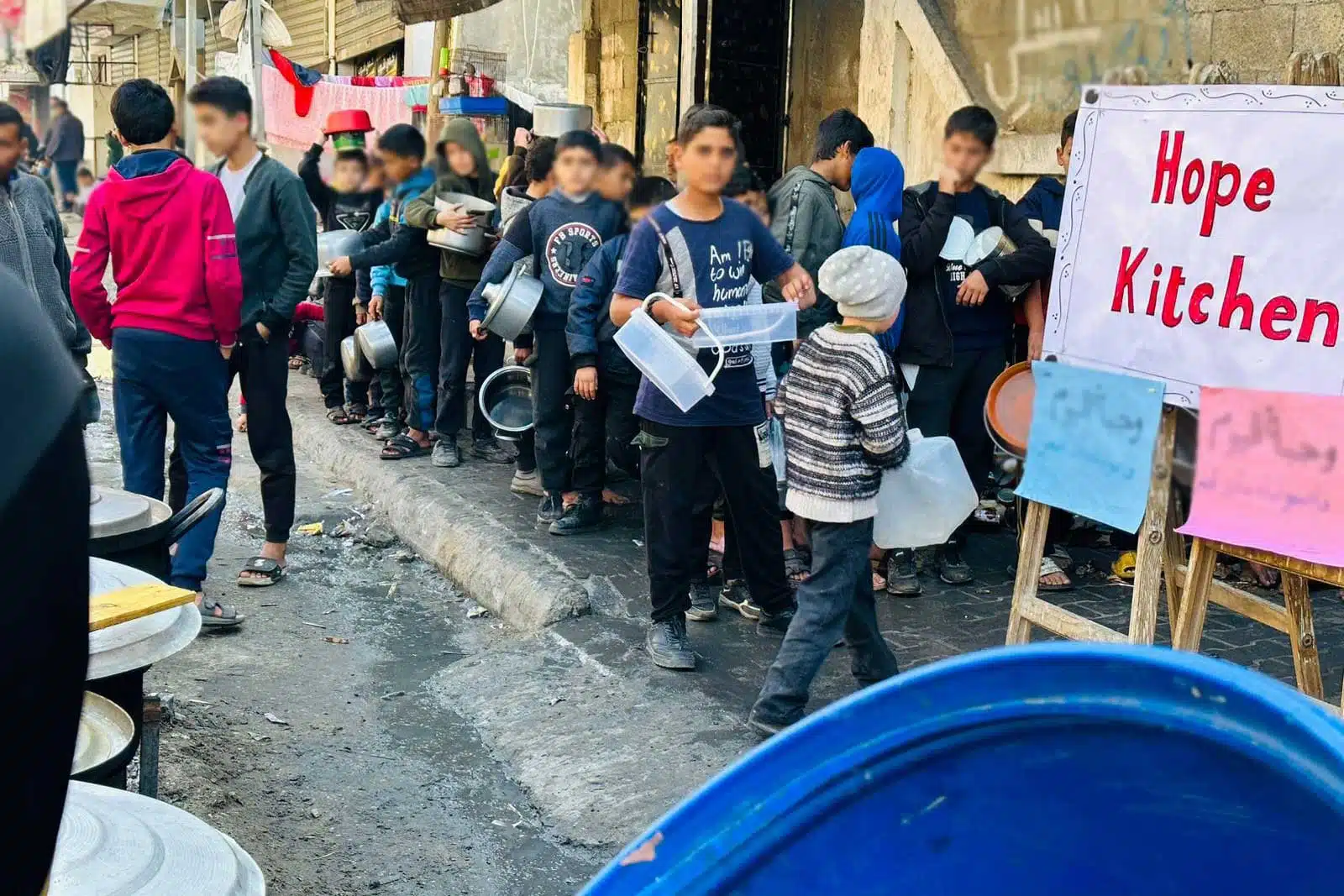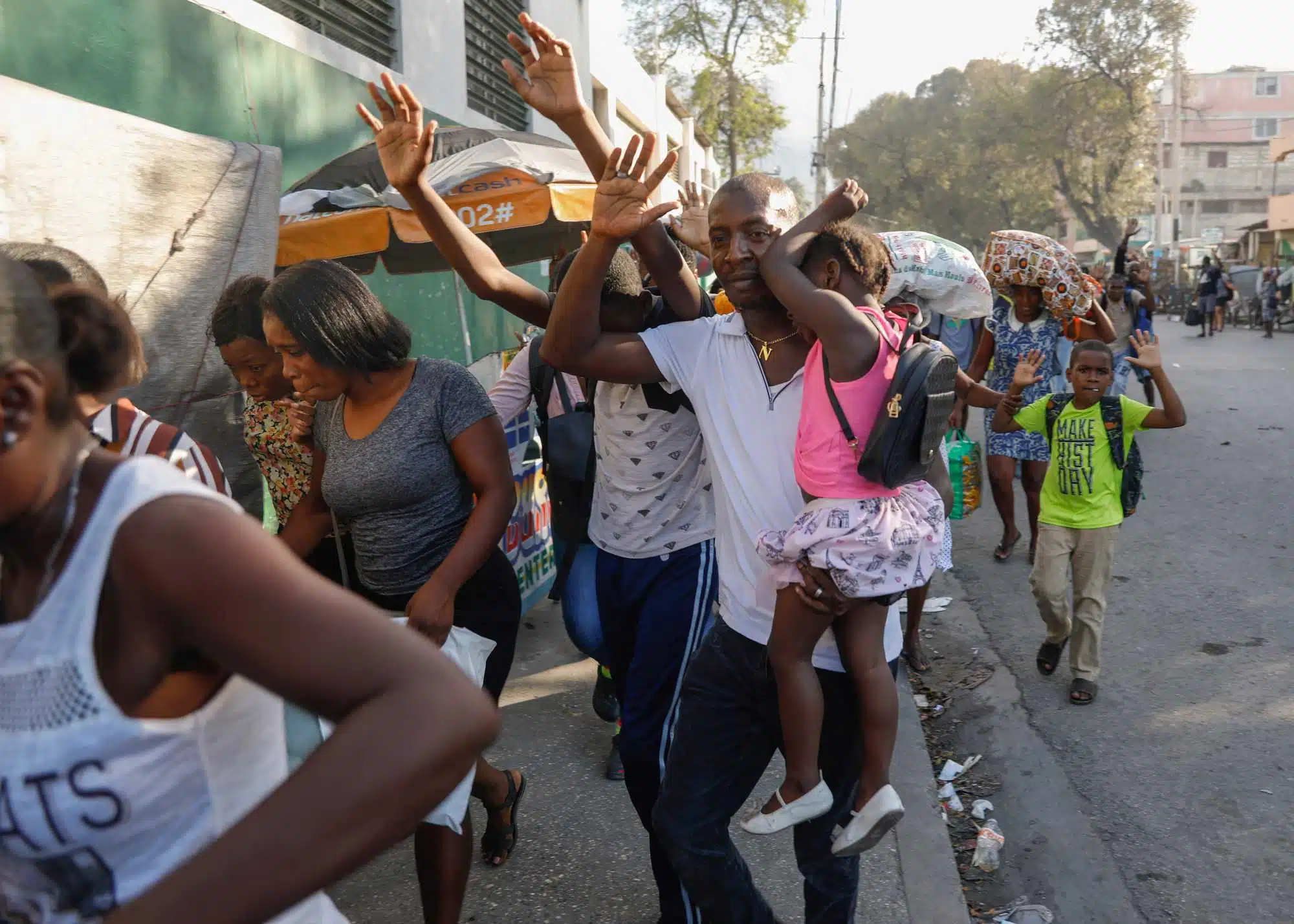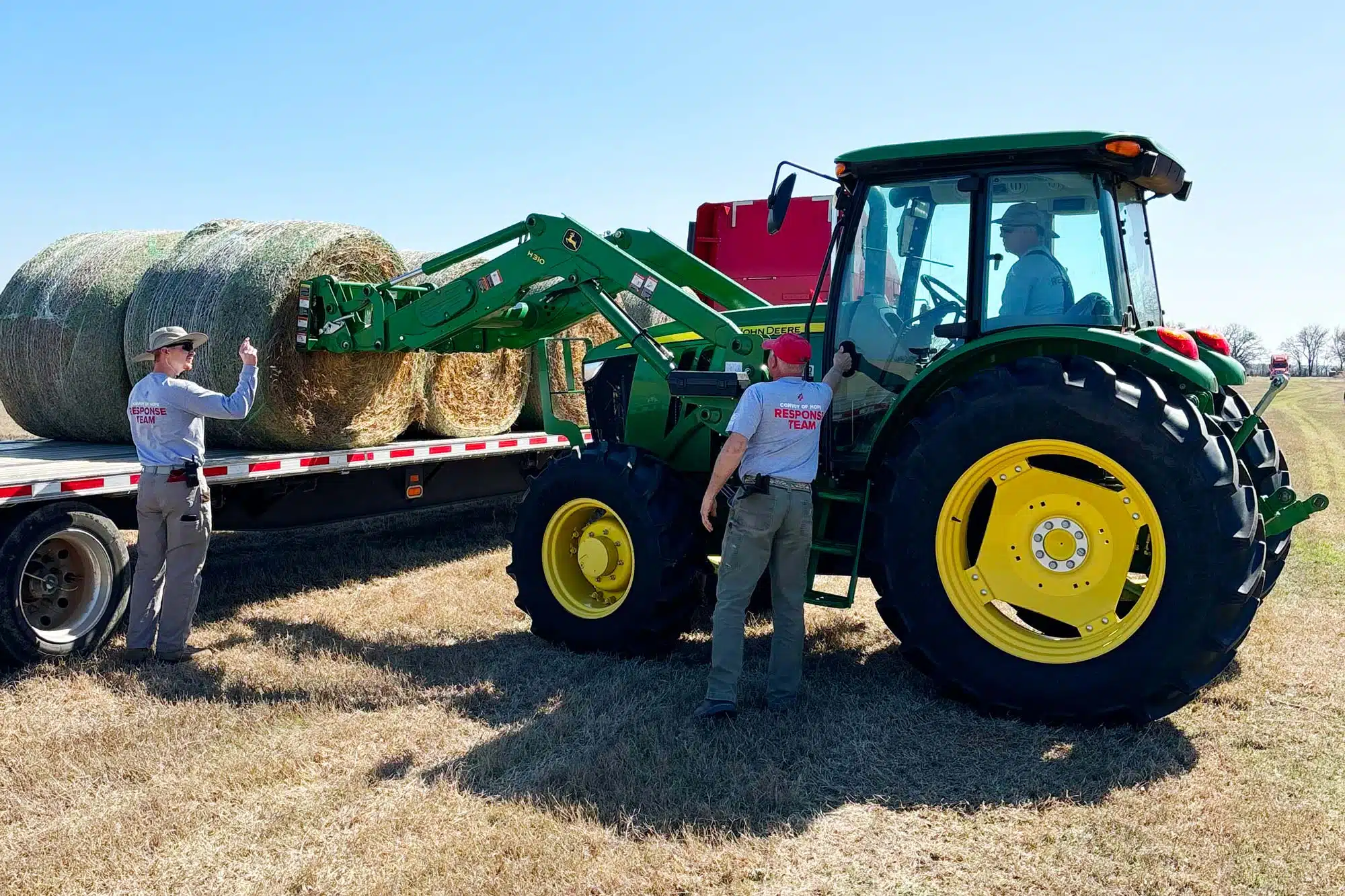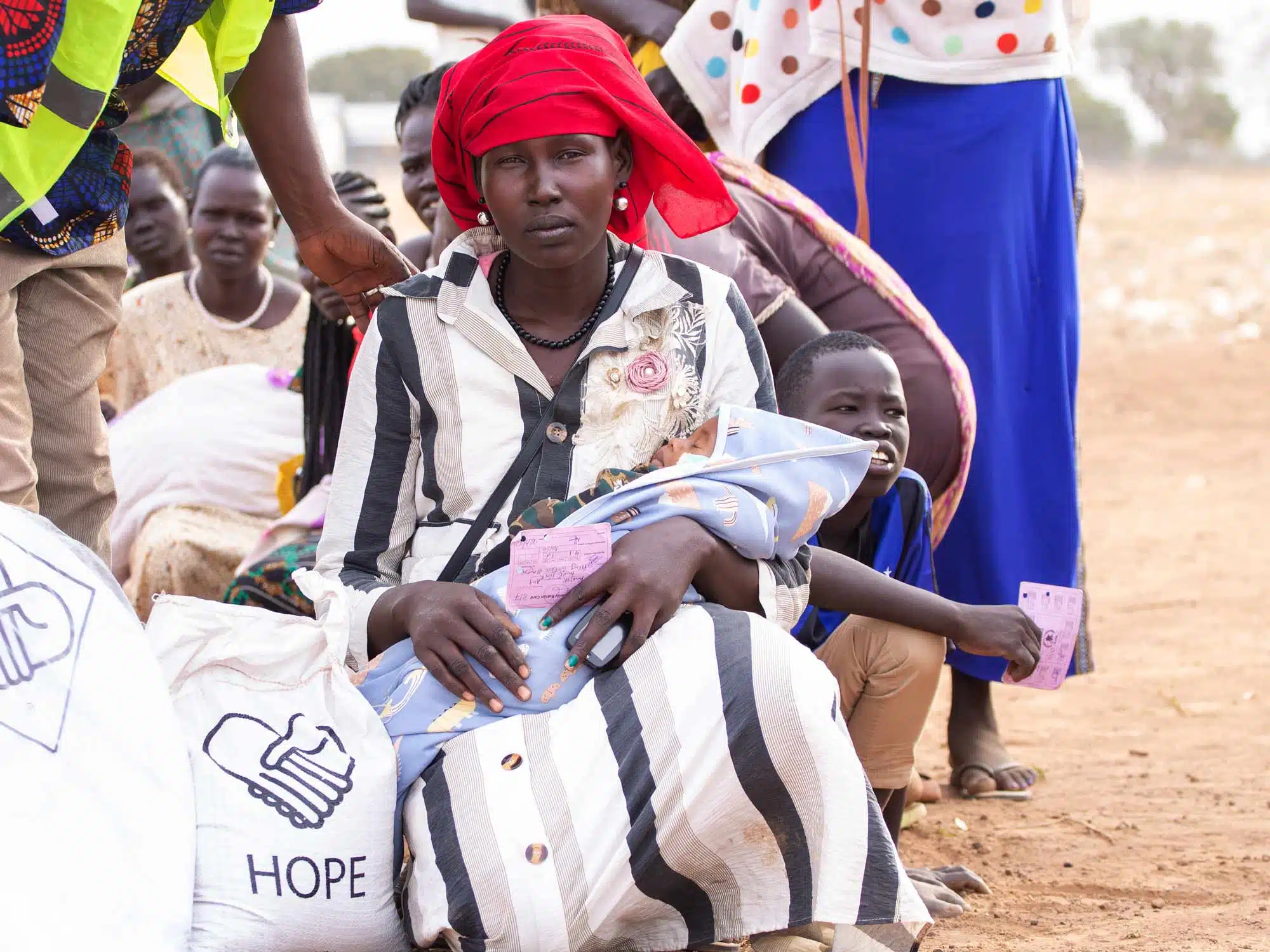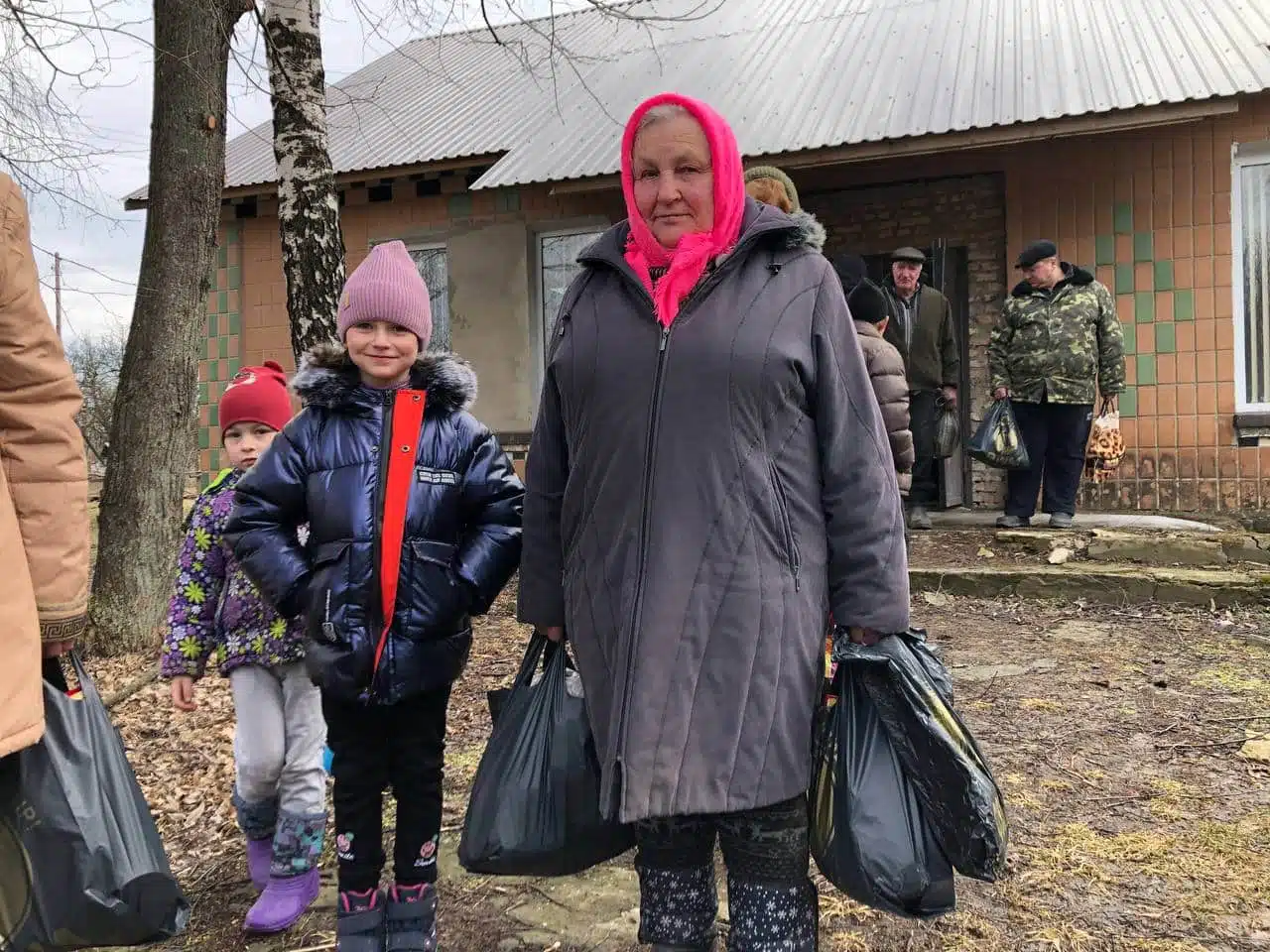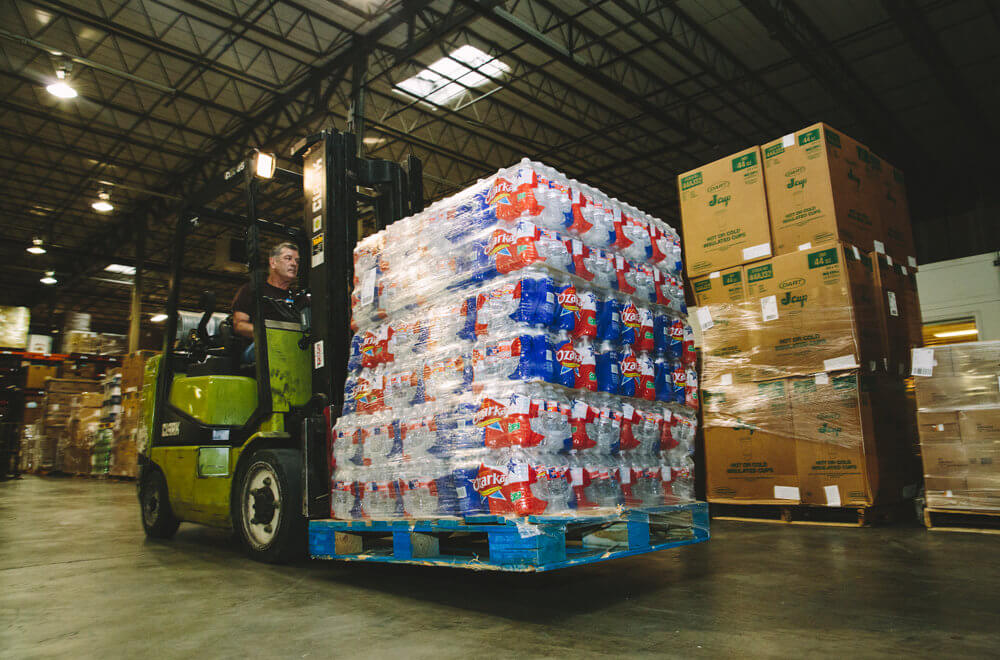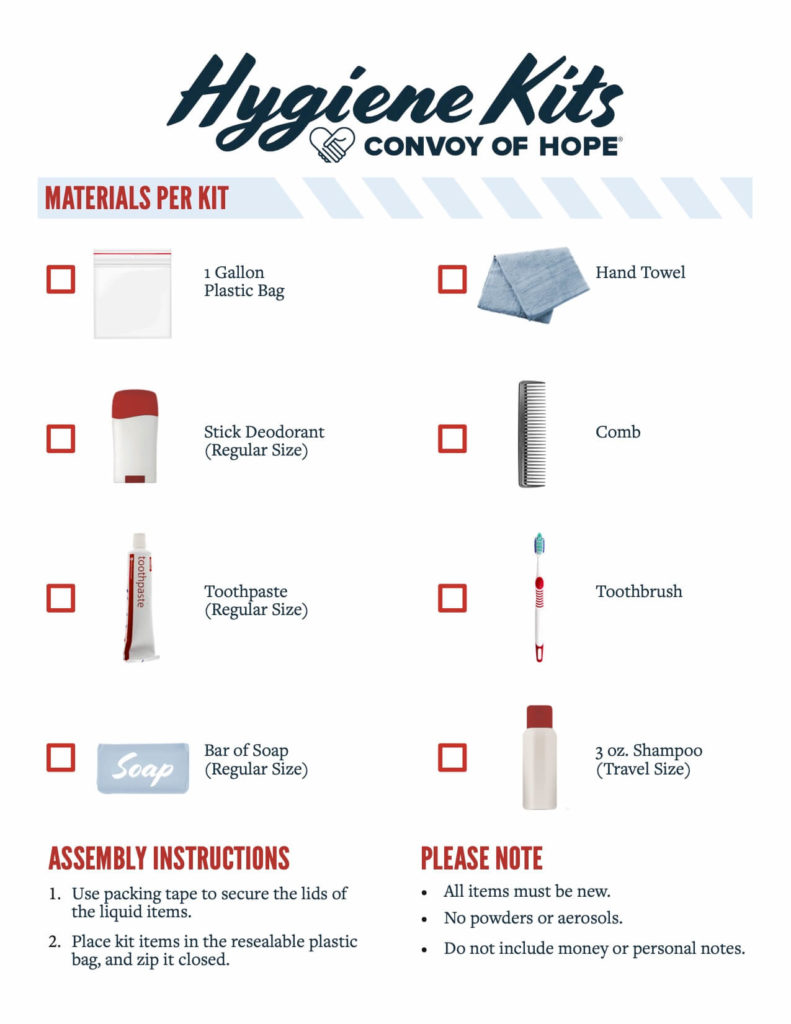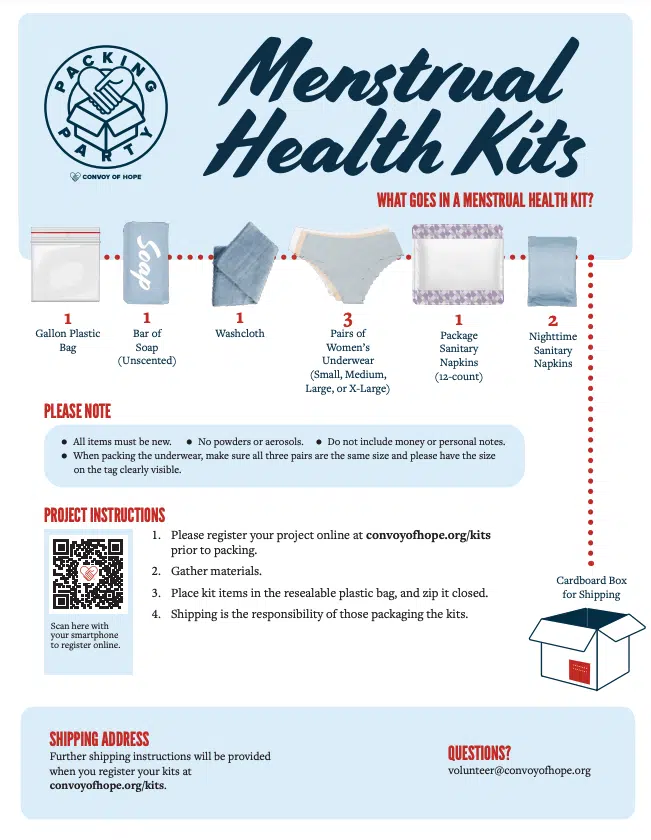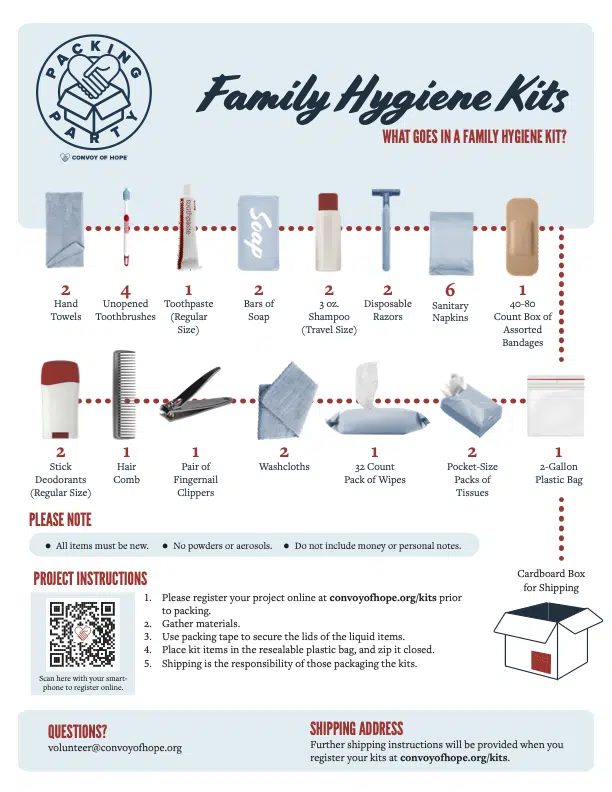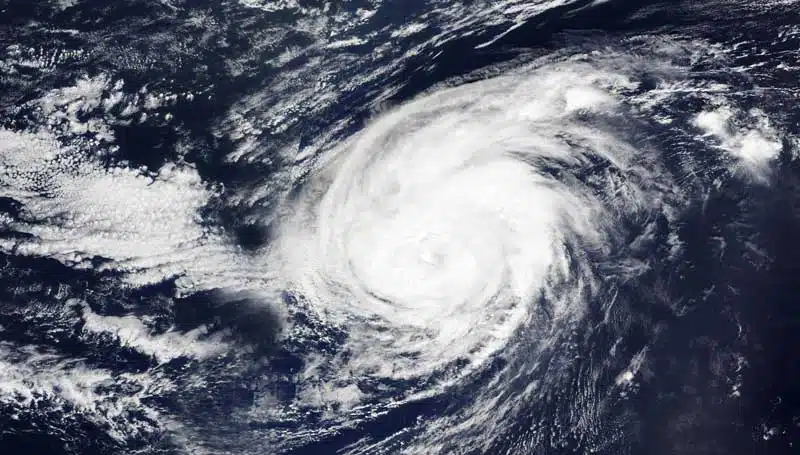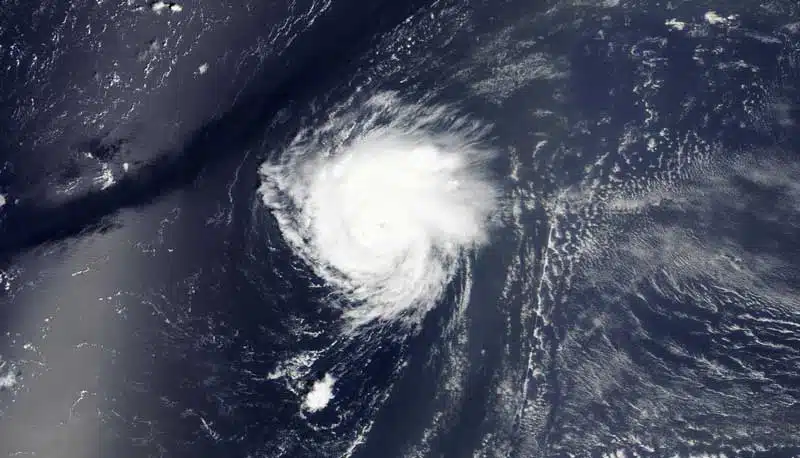It doesn’t take a global pandemic to remind you the world is filled with hostile microorganisms. Every year, enough of us come down with a cold or the flu to serve as a heads up on the importance of taking fundamental steps to maintaining our health. If you’re looking to protect your family from the spread of disease, you know sanitary supplies and cleanliness are important.
As a quick start, the World Health Organization outlines five heroic acts we can all apply to protect ourselves against germs and viruses — which include washing our hands and staying home when we’re sick.
But what cleaning supplies do you need? How much do you need?
Believe it or not, the list does not have to be all that long for your awareness and preparation to be up to standard.
In this article, we will be discussing the seven most common types of hygiene kits.
These include personalized hygiene kits for you and your family, as well as emergency hygiene kits for people in your community and for those around the world dealing with difficult situations, which range from poverty to natural disasters.
Plus, we’ll outline how you can help bring hope to people in need through assembling basic but effective hygiene kits that you or a local charity can distribute.
Know what kit you’re needing? Jump to that section by clicking below.

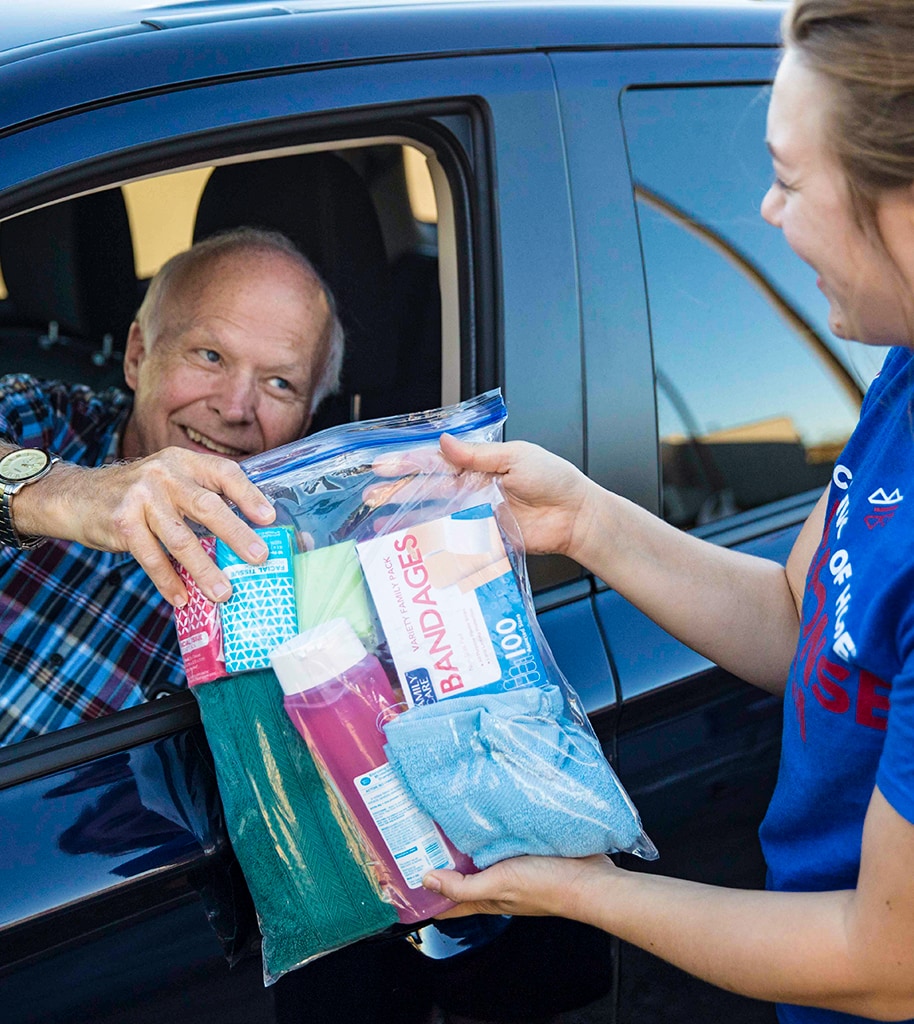
What Is a Hygiene Kit?
A collection of items designed to prevent the spread of germs — that’s the bare bones definition of a hygiene kit. While hygiene kits are a useful item for everyone to have on-hand, they are often most needed in low-income communities and areas affected by disasters — where these essential cleaning items are far less readily available.
When a disaster hits, the resulting floodwaters, mud, and debris can greatly increase the presence of bacteria and germs and drastically reduce access to clean water. Hygiene kits become important for people’s recovery, even for their survival.
Hygiene kits often include travel-sized items (e.g., toiletries) stored in sealable plastic bags, which aid in protecting items from water and make them easier for charities to distribute to people in need.
Compassion organizations around the world will often pack and store hygiene kits to keep on-hand for quick distribution. A great volunteer opportunity for people — such as high school or college students looking to give back — is to set up a kit-building event.
How To Make a Hygiene Kit
Whether you’re looking to protect your family’s health or hoping to provide support for a family in need, making a basic hygiene kit costs just a few dollars and takes little time to assemble.
Another benefit of the simple and inexpensive nature of these kits is that it’s easy for charities and individuals to buy and build hygiene kits in bulk.
You don’t have to wait for a major disaster before you try this idea. Consider assembling free hygiene kits for the homeless people in your area. Mobilize a group of friends to buy and assemble large quantities of these DIY kits for distribution. With a little research, you can probably find a local charity that will accept these kits for distribution to areas of greatest need.
Depending on the type of hygiene kit you’re building, you’ll only need a few simple component items. We’ll cover the most common types of kits in a moment.
You’ll need:
- • Specific hygiene items based on the type of kit.
- • A gallon-sized plastic bag to store the items.
Optional: When assembling hygiene kits in bulk, use a sturdy cardboard box or boxes to either store the kits or to use for shipping.
What To Put in a Hygiene Kit
While disaster preparedness kits contain water, food, and other emergency supplies, hygiene kits include items dedicated exclusively to personal hygiene.
What should you put in a hygiene kit? That depends on the type of kit you’re building. Consider these general guidelines.
- • Include personal cleaning items — soap, wipes, toothpaste, and roll-on deodorant, for example.
- • Incorporate basic first-aid supplies, including bandages, washcloths, and antibacterial ointment.
- • All items should be new.
- • Don’t include powders or aerosols.
7 Types of Hygiene Kits
Good basic hygiene is something we might take for granted when it’s readily available day to day. But our daily routines can unexpectedly change, even for mundane reasons, throwing off our hygiene routine. What specific items should you consider when preparing for a surprise disruption? How would a personal kit compare to a family kit or an emergency kit?
In the following sections, you can find some great ideas for personalized hygiene kits for you and your family. As well, you’ll see options for making emergency hygiene kits for those in your community and around the world who deal with difficult situations, including poverty and natural disasters.
1. Personal Hygiene Kits
Most of us can probably remember a parent or family member who had enough supplies ready for whatever sanitary needs arose. Remember Mom’s bottomless purse that had everything you could ever need?
However, when you’re on your own, you need to keep a supply of cleaning supplies handy. Having a personal hygiene kit on hand means that you’re being proactive and thinking ahead. Thankfully you don’t need to spend a ton of money to be prepared. You just need the basic essentials.
Your personal hygiene kit should contain the following:
- • Hand sanitizer
- • Disinfectant wipes
- • Paper towels
- • Standard bandages
- • All-purpose cleaners
- • Spray bleach cleaners
- • Microfiber cleaning cloths
2. Travel Hygiene Kits
Have you ever been traveling and arrived at your destination, only to realize you’ve forgotten a toiletry item you desperately need?
You can save yourself this frustration by purchasing a travel hygiene kit before you leave.
Websites like Amazon have a large variety of travel hygiene kit options to choose from. Look for the toiletries you typically need and buy a kit that will best serve you when you’re away from home.
The next time you’re preparing to travel, you can just pull from your stock of travel kits and you’re all set.
As an added benefit, you can be ready to help friends and family if they visit and unknowingly forget to pack something in their toiletry bag.
3. Hygiene Kits for the Homeless
It’s a growing challenge in so many communities — people who are unsheltered, trying to get by on their own while enduring a host of unmet needs. Maybe you’ve wondered what you could do for the person holding a sign at a stoplight or waiting in line at a food pantry. Our hearts hurt for our neighbors on the streets.
Most of us want to help in that moment but are not prepared to do so. Maybe we don’t have cash on hand or are concerned with what specific aid would be most beneficial to the person in need. This is where a hygiene kit for the homeless can be a real asset.
These hygiene kits are excellent to have in your car, ready to give out whenever you see a need.
Items for these kits often include the following:
- • A comb
- • A bar of soap
- • A hand towel
- • Stick deodorant
- • Shampoo (3 oz.)
- • An unopened toothbrush
- • Toothpaste
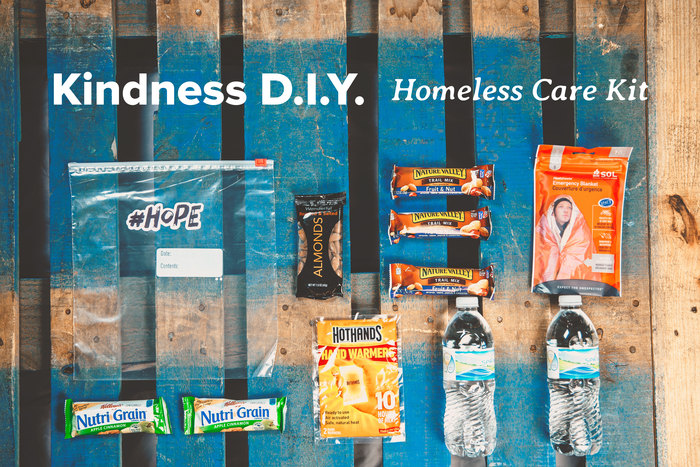
In addition to having these kits on hand, you might also consider building some homeless care kits.
Instead of hygiene items, these bags include the following:
- • Food items, like protein bars with a long shelf life
- • Water
- • Hand warmers
- • Emergency blankets
If you’re really looking to make a difference in your community, we’d encourage you to organize a group of friends and family to build and assemble these kits. The next time you see a person in need, you will be ready to provide support!
A hygiene kit for unsheltered individuals, combined with a care kit of food and water, is a great way to share kindness.
4. Menstrual Health Kits
In lower-income communities, areas affected by disasters, and many impoverished countries around the world, women often fall behind on education, miss out on employment opportunities, and lack menstrual health resources.
You can play an active role in empowering women in your community and around the world through the creation and distribution of menstrual health kits.
These kits include the following:
- • A bar of soap
- • A washcloth
- • Pairs of women’s underwear (Small, Medium, Large, and X-Large by kit)
- • A package of sanitary napkins
- • Nighttime sanitary napkins
Menstrual kits do more than promote personal hygiene. Providing these kits helps keep girls in school, restoring their confidence and dignity.
5. Men’s Hygiene Kits
Strong and healthy men contribute to stronger and healthier communities. However, often in areas of poverty, men will sacrifice their own health to ensure that their families are cared for.
By neglecting their own health, men put themselves at greater risk of becoming sick and unable to provide the care and support their families need.
You can help fill this gap by providing men’s hygiene kits.
A men’s hygiene kit includes the following items:
- • A comb
- • A bar of soap
- • A hand towel
- • Stick deodorant
- • Shampoo (3 oz.)
- • An unopened toothbrush
- • Toothpaste
While this list mirrors the contents of a kit for the homeless, its function is broader. When distributed with care an forethought, these kits help create and maintain stability for families and communities in difficult times by ensuring the men in these areas have what they need.
6. Family Hygiene Kits
Families are the backbone of any community, and in difficult times it’s important to ensure the entire family is supported. Following a disaster or in an impoverished region where supplies are scarce, parents struggle to properly care for their children.
With family hygiene kits, you can help your family and families in your community be better protected.
These kits should include the following:
- • Hand towels and washcloths
- • Toothbrushes
- • Toothpaste
- • Bars of soap
- • Shampoo
- • Disposable razors
- • Sanitary napkins
- • A box of assorted bandages
- • Stick deodorants
- • Combs
- • A pair of fingernail clippers
- • Wipes
- • Tissues

In addition to kits that support the entire family, it’s also important to have specific supplies ready to care for babies.
Consider the following items recommended for baby care kits:
- Size 2 or size 5 diapers
- Baby lotion
- Diaper cream
- Baby wipes
- Baby shampoo
- Baby washcloths
Looking for a way to extend support beyond your community? Building kits for charities in your area that ship these hygiene products internationally.
Choosing to donate financially is another great option. Your gift allows charities to assemble hygiene and care kits directly on-site at crisis zones. This reduces shipping costs and helps your money go further.
By partnering with charities, your impact is magnified beyond your city and can help provide aid to people around the world.
7. Disaster Cleanup Kits
While it’s vital for people affected by disasters to have access to clean water, food, and personal hygiene items, people need access to cleaning supplies in order to start the process of rebuilding.
That’s where a cleanup kit comes in.
These disaster services kits include the following:
- • Paper towels
- • All-purpose cleaners
- • Spray bleach cleaners
- • Dish soap
- • Disinfectant wipes
- • Large trash bags
- • Work gloves
- • Microfiber cleaning cloths
- • Sponges
- • Scrub brushes
- • N95 face masks
- • A 5-gallon bucket with removable lid
Story: Hygiene Kits Help Refugees From Ukraine
During the past two years, the war in Ukraine has forced more than 3 million refugees to seek shelter in neighboring countries. Thankfully, the outpouring of support from around the world has been enormous. People compassionately motivated to assist those affected by this crisis have been helping in various ways. One primary way — providing hygiene kits.
Currently, there is a big need for baby care kits and menstrual health kits. As long as war continues displacing Ukrainians — primarily women and children — demand for both hygiene and infant care items will grow.
Can I Donate To Create Kits?
Yes! Monetary donations for kits allow partners to be involved in a tangible and specific way while meeting one of Convoy of Hope’s greatest needs for a wide range of responses.
Donations given for kits are used to purchase supplies, such as soap, sanitary items, diapers, toiletries, and other necessities. Items for kits are purchased in bulk and then put together by volunteers at Hands of Hope. Once finished, kits are sent to those in need — in this case, refugees throughout Europe.
By donating to create kits, your money goes further quicker. And while donating physical kits can be useful, donating funds saves time and money — both of which are especially valuable during times of disaster or crisis.
Can I Build a Kit for Someone in Need?
Absolutely! In disaster zones and low-income communities, Convoy of Hope delivers the kits you pack to thousands of people in need every year.
Whether it’s one, five, or 500, Convoy of Hope takes great care to deliver kits put together by individuals, churches, and companies.
If you are interested in building kits, please fill out the form below and a team member will reach out to you with instructions.
